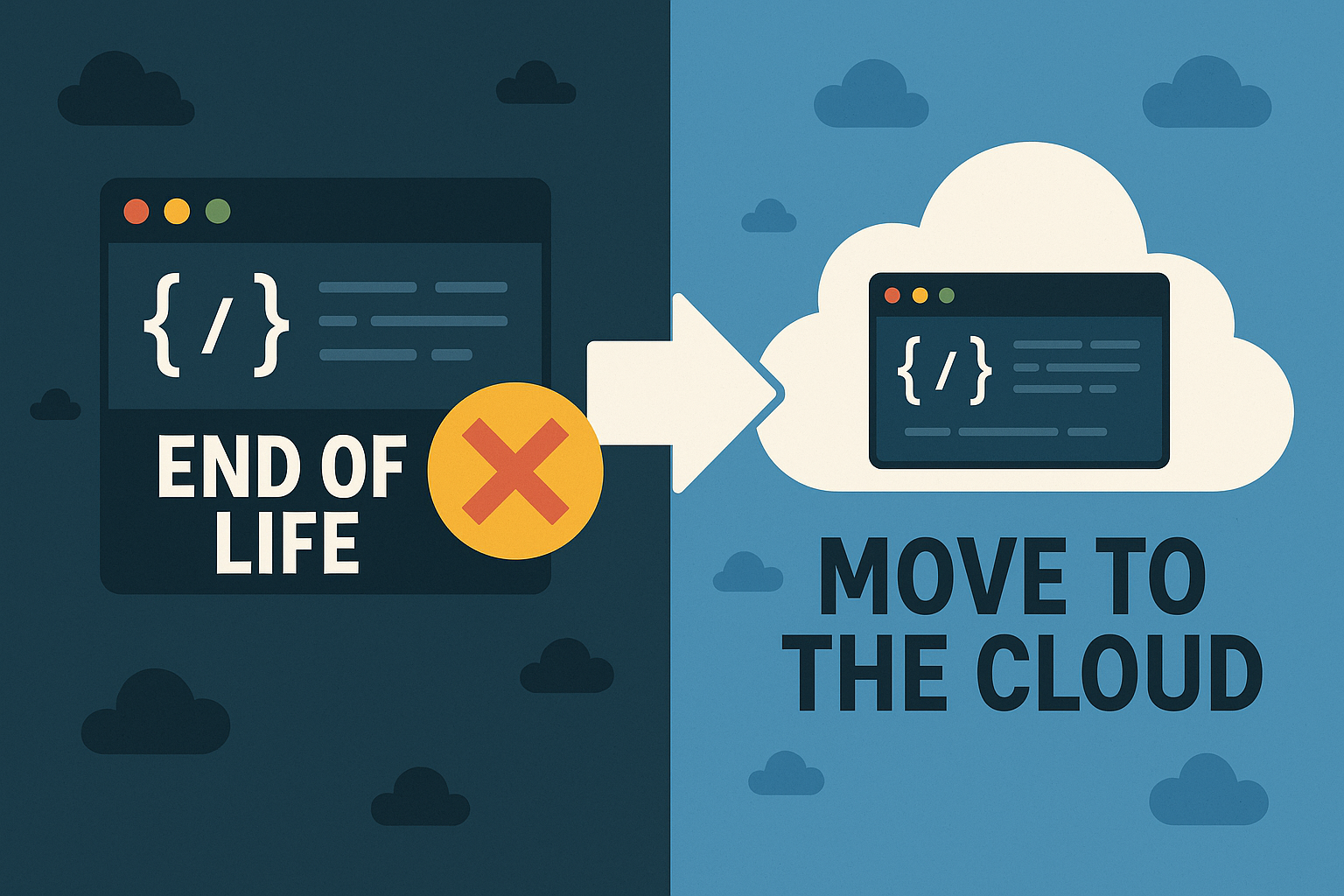
Key Takeaways:
- The Shift Is Underway: End-of-life announcements are accelerating, signaling that the move to cloud-based systems in higher education is no longer optional—it’s inevitable.
- Action Is Critical: Institutions must audit their IT portfolios and prepare for the cloud, balancing security, integration, and long-term costs to stay ahead.
- The Writing Is on the Wall: Vendors may promise continued support for legacy systems, but the real innovation—and the future—are happening in the cloud.
In the higher education and enterprise software world, there’s a quiet shift happening—unless you’re paying attention. End-of-life (EOL) announcements for on-premises software are accelerating, and while some vendors are subtle, others are quite blunt: the cloud is no longer a “maybe.” It’s a “when.”
What Does End-of-Life Really Mean?
When a product is labeled as EOL, it marks the end of its lifecycle from the vendor’s point of view. No more updates. No more innovation. Sometimes not even support. In some cases, vendors continue to provide limited services like critical bug fixes or regulatory updates—usually under “maintenance mode”—but even that is temporary. This puts institutions in a difficult position: keep investing in aging software or make the leap to a modern, often cloud-based, alternative.
Why Is This Happening?
The cloud is the main driver. Vendors want to streamline development, focus on recurring revenue models, and improve security, scalability, and performance. Supporting legacy on-premise systems doesn’t align with these goals. For institutions, the cloud offers flexibility, remote access, and built-in compliance features. For vendors, it offers predictable income and easier customer management.
Deep-Dive on Some Platform Strategies
Let’s look at what’s happening with specific platforms.
Ellucian Colleague and Banner
Ellucian continues to support both Colleague and Banner, with no formal end-of-life announced. However, the company’s messaging—especially at Ellucian Live 2025—makes its cloud-first strategy clear. Innovation is centered around Ellucian SaaS, Experience, and Insights, with on-premise versions receiving fewer enhancements over time. See my last article.
Verdict: Supported for now, but the future is clearly SaaS.
Huron eResearch Platform (On-prem?)
The University of Michigan recently announced that the Huron-provided eResearch platform will sunset by 2031. While that feels distant, the university is already planning its transition. When research infrastructure is involved, long timelines make sense—but they also indicate a definitive end.
Verdict: End-of-life confirmed. Transition planning underway.
Microsoft Dynamics GP
Microsoft has set the EOL for Dynamics GP support and updates for Dynamics GP on the 31st of December 2029 (with security patches ending on the 30th of April 2031), but these will focus solely on tax, regulatory, and bug fixes—no new features.
Verdict: The future is clear: migrate or get left behind.
Oracle PeopleSoft
Oracle has made it clear that it has no plans to end investment or support for current PeopleSoft customers, offering a rolling 10-year support window—currently extended through at least 2036. While this provides a sense of stability, it’s hard to ignore where Oracle is focusing its energy. A quick look at Oracle’s higher education webpage highlights Oracle Cloud Student as the future, while PeopleSoft is increasingly relegated to the background. You have to dig to even find PeopleSoft mentioned. The message is subtle but unmistakable: the long-term roadmap leads to the cloud.
Verdict: Support exists, but long-term viability is limited.
PowerCampus
Rumors are circulating about PowerCampus heading toward EOL status. While Ellucian hasn’t formally confirmed it, multiple conversations suggest support will wind down gradually, moving into a maintenance-only phase.
Verdict: Prepare for an announcement—this is likely on borrowed time.
PowerFaids
Initially slated to end on-premise support by 2025, PowerFaids Cloud faced major early implementation challenges. The EOL date has likely moved to 2027, but long-term, it’s clear that staying on-prem while your SIS is in the cloud is not sustainable.
Verdict: EOL delayed, but still inevitable.
Unit4 On-Premises
As of December 31, 2024, all on-premise Unit4 products (ERP, Financials by Coda, and FP&A) will no longer be supported. Customers are being offered a migration path to SaaS, with full support maintained until the end date.
Verdict: Confirmed EOL with clear path to cloud.
What Should Institutions Do?
- Audit your IT portfolio: Know what’s at risk and what’s being sunset.
- Factor in cloud readiness: Security, integrations, user access, and compliance are all easier to manage in modern cloud environments.
- Plan for total cost of ownership: Don’t just look at license costs—factor in support, bolt-ons, and opportunity costs.
Conclusion: The Cloud Isn’t Coming. It’s Already Here.
End-of-life announcements aren’t just about aging software. They’re signals—telling institutions it’s time to think ahead. Whether you’re running financial aid, ERP, or CRM systems, the question is no longer if you’ll move to the cloud. It’s when.
🎙 You can listen to an AI-generated version of this blog post (created with Google NotebookLM).

